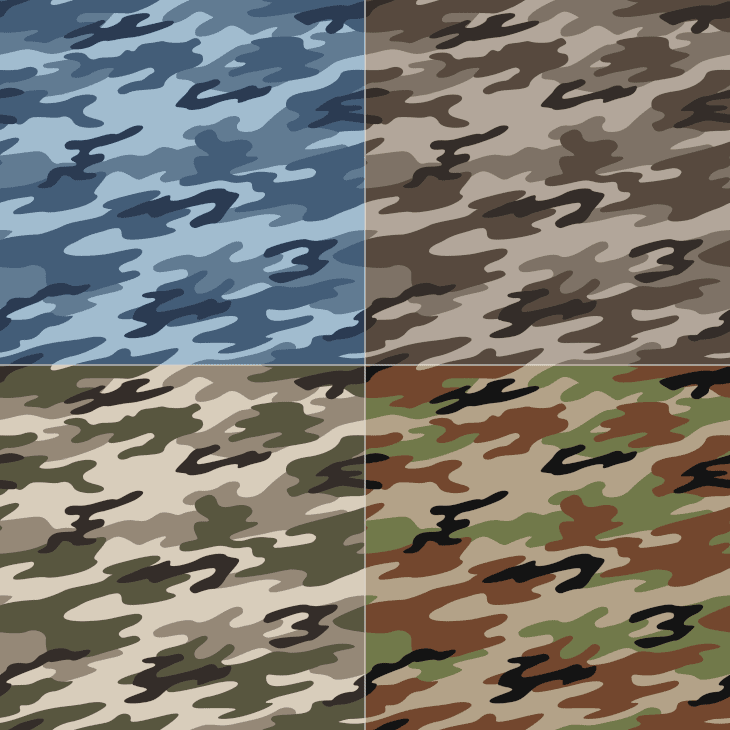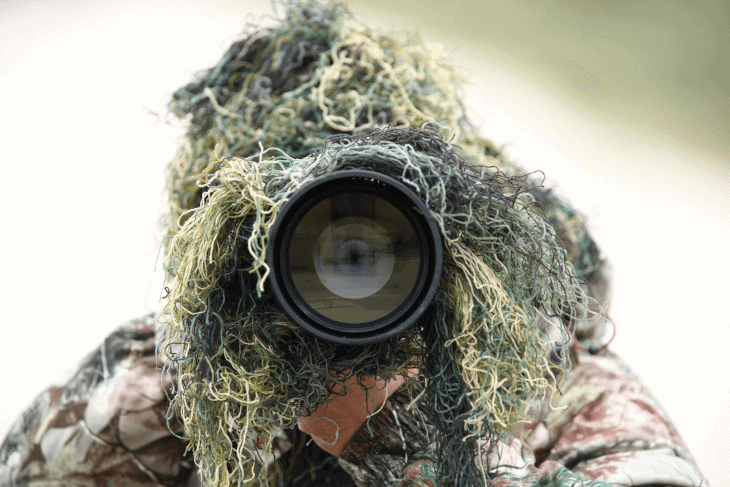Selecting pants for a hunt may seem like a no-brainer, and… well, yeah, it’s pretty easy to pick a pair of pants. But we’re writing this post because while it may be simple, it’s really important. The right pair of pants can hide your appearance, hide your scent, AND mask your sound… while the wrong pair of pants can tell every living creature in your hunting environment, “Hey, this guy’s here to hunt! His pants totally gave him away! Everybody run!” and that’s not what you want.
So, take a look below to find out how to select a pair of hunting pants. We kept it short and sweet. None of the features are that complicated, but you want to make sure that whatever pair you chose features each of the qualities below. And, if you need any helping choose a pair, take a look at our discussion of the best hunting pants to see which ones we recommend.

You want your hunting pants to have the following qualities:
They Feature Water-Proof / Water Resistant Material
This can get tricky, because “water-proof” doesn’t necessarily mean the same thing as “water resistant.” Generally speaking, water-proof means the fabric disallows any and all moisture from entering the fabric, whereas “water resistant” means that the fabric repels much of the moisture in the environment—but not all of it.
Here’s how that may play out: a waterproof garment may keep you dry in a downpour, for as long as you’re in that downpour, whereas a water-resistant garment may only keep you dry in a little drizzle or shower, and for a limited period of time. Both block water and moisture, but one does so better, and for longer.
As a general rule of thumb, “water-proof” is the gold standard you’ll find on high-end hunting pants, whereas “water resistant” is what you’ll find on “just-the-basics” hunting pants.
The water-proof vs. water resistant decision is personal to each hunter, and if you’re hunting in the Southwest, where rain isn’t really a big issue, you might be fine. If you’re hunting in the Pacific Northwest, where rain is a big consideration, you may want to pay more attention to the water-proof vs. water resistant concern.
They’re Made from Durable Fabric
Not all fabrics are created equal. Some hunting pants are basically sweat pants that you put over your regular pants, while others feature four-way woven fabric so you can twist and turn and lurch through thorny brush. Generally, higher-end hunting pants have signature-blend fabrics that are patented, and manufacturers put a LOT of R&D into them, whereas “just-the-basics” hunting pants may feature fabrics that are a lot more simple, and not as tough. If a manufacturer has named the type of fabric they use, chances are they put a lot of thought into it.
But while all fabrics are not created equal, not every hunter NEEDS super-durable fabrics. If you hunt deer from the same tree stand every year, and that tree stand is reasonably easy to get to, you’re probably not putting too much stress on your pants. If you’re spot-and-stalk hunting a Montana bighorn, well, durability might be a little more important to you. There are a million ways to hunt, and you need to figure out what you need.
As a general rule of thumb, if a brand puts a lot of effort into making a signature-blend fabric for their pants, they’ll tell you again and again about it in their advertising copy. SITKA is pretty well-known for making really durable fabric on their pants.
The Camo / Pattern Matches Your Hunting Environment
This is worthy of an entire post (or, even, an entire book), but it’s important: get the right type of camo for the environment you’ll be hunting in.
This takes a knowledge of where you’ll be hunting, what the flora looks like, what it looks like at certain times of year, and so on. If you’re new to the hunting environment, do some research, and get it right. You can have the perfect pair of pants, but if they don’t make you blend into your surroundings, you’ve got the wrong pair of pants, my friend.
They Feature Some Kind of Scent-Blocking Technology
When it comes to hunting pants and scent control, there tends to be three levels of protection:
> No scent control (and that can be fine, if you launder your hunting clothes with odor-masking/odor-eliminating detergent);
> Moderate scent control, where pants are sprayed with scent-blocking chemicals, usually on the exterior of the garment; and
> High-tech scent control, where the garment itself has miniscule filaments between the layers of fabric that “catch” odor.
Basic hunting pants tend to offer no scent control, mid-level pants tend to offer chemical coatings, and high-end pants may feature a (usually patented) odor-control characteristic in the fabric itself.
Scent control is an extremely important aspect of hunting—especially if you’re bow hunting, where you’ll need to get up-close-and-personal with your game. If you’d like to learn more, we discuss in our post about pants / scent control.
They Have Decent Sound Quality (In Other Words, They’re Quiet!)
This is another overlooked aspect of hunting: how much sound your apparel makes. We know guys who will obsess over how loud the string on their bow is, but sound like a crumpled-up newspaper as they trample through the woods.
Obviously, you want quiet, and pants-makers will let you know if they have any patented tech that keeps their pants silent.
This, too, is important to everyone, but a little bit more important to the spot-and-stalk crowd. If you’re in a tree stand or a ground blind, it’s still important, but not as important as when you’ll be maneuvering throughout your hunting environment.
They Have a Lot of Pockets
Pockets! Pockets are awesome. We’re pocket guys, and we want as many pockets as we can possibly have. And, at present, it seems like the most pockets you can cram onto a pair of hunting pants is eight: two front hip pockets, two cargo pockets, two zip pockets, and two back pockets.
But, as with all these features, what works for us may not be what you need. There are plenty of pants with six pockets, plenty with two, and some pants that are basically “shell pants” that you put over your regular pants, and those have no pockets. Know your hunting process, and figure out how many pockets you’ll need.
We Promised Short and Sweet…
…and there you have it. It’s not too complicated, but you definitely want your pants to encapsulate all those qualities.
OK, that’s it for pants. All the best to you—we wish you fun hunts and warm legs!



